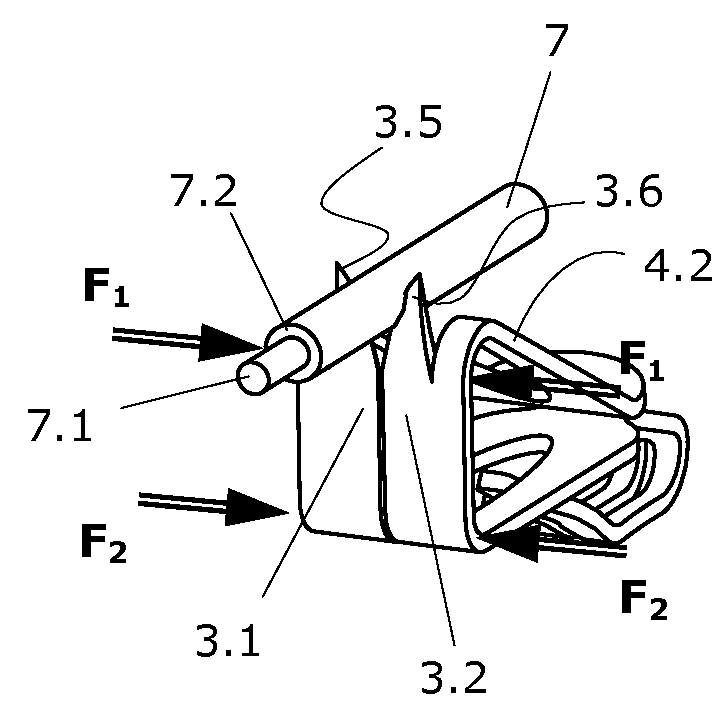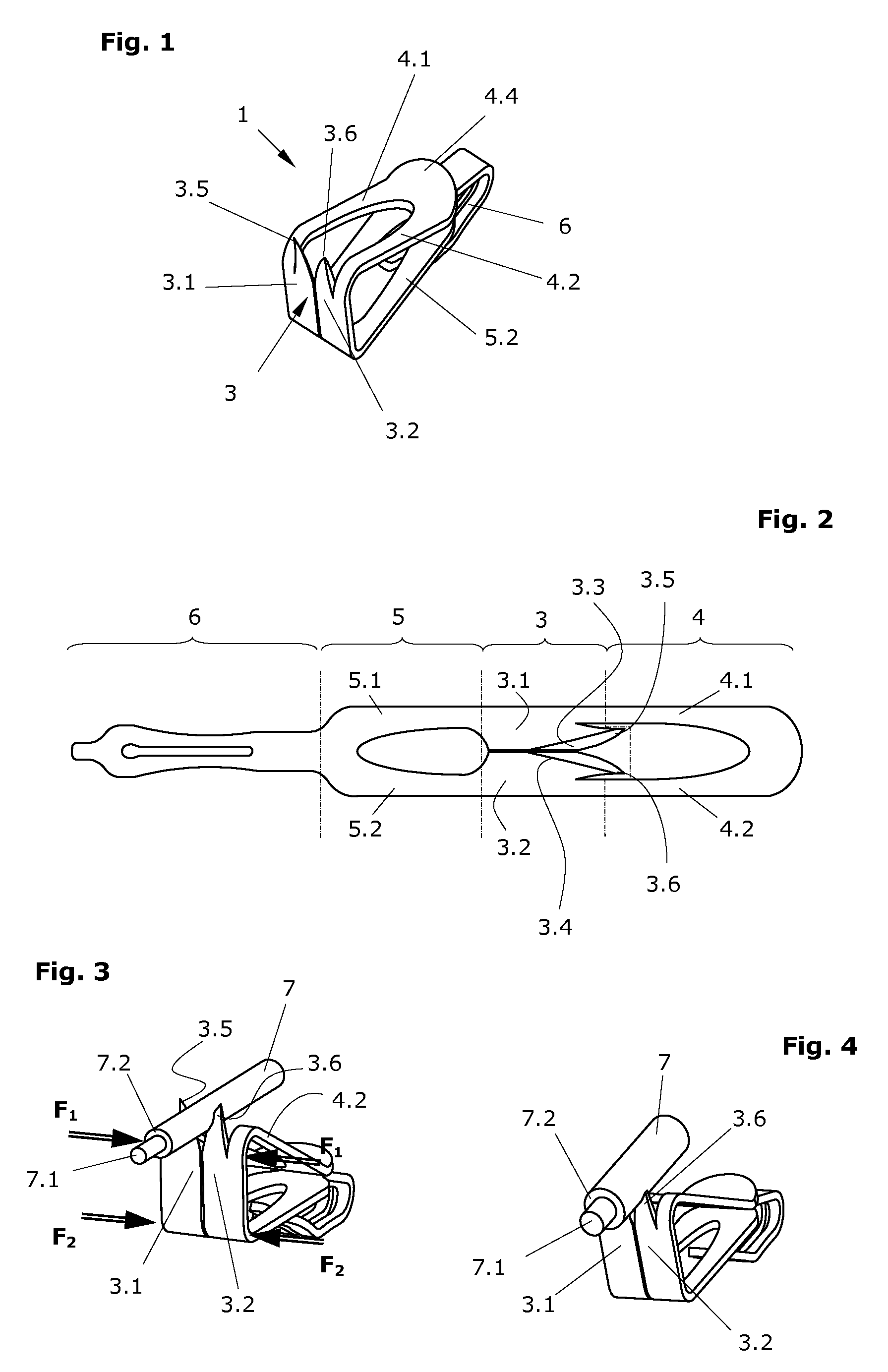Insulation displacement contact and contacting device
a technology of displacement contact and contacting device, which is applied in the direction of contact members penetrating/cutting insulation/cable strands, electrical apparatus, fastening/insulating connecting parts, etc., can solve the problems of large installation height, large material strength assumption, and already limited degree of re-usability. , to achieve the effect of reversing reliable and comparatively economical manufacturing methods
- Summary
- Abstract
- Description
- Claims
- Application Information
AI Technical Summary
Benefits of technology
Problems solved by technology
Method used
Image
Examples
Embodiment Construction
[0055]The depictions of FIGS. 2 and 15 correspond to the insulation displacement contacts that are shown in FIGS. 1 and respectively 13 / 14 in the flat form of a blank, as they exist for example as semi-finished products before being bent into the desired 3-D form; in FIGS. 2 and 15 the bending lines (in reality they are regions around these lines) are respectively also depicted, which define the transition between the cutter section on the one side and the fork sections on the other sides.
[0056]The insulation displacement contact 1 depicted in FIGS. 1-4 comprises a cutter section 3 with two blades 3.1, 3.2. In an area of the blades, there are opposing cutting edges 3.3, 3.4 which are designed to cut through an insulation 7.2 of a conductor 7.1. In this text, “blades” will indicate whole length of the elements that make up the cutter section, thus not only in the area in which the cutting edges exist.
[0057]A first fork 4 with two fork prongs 4.1, 4.2 connects on the proximal side (in...
PUM
 Login to View More
Login to View More Abstract
Description
Claims
Application Information
 Login to View More
Login to View More - R&D
- Intellectual Property
- Life Sciences
- Materials
- Tech Scout
- Unparalleled Data Quality
- Higher Quality Content
- 60% Fewer Hallucinations
Browse by: Latest US Patents, China's latest patents, Technical Efficacy Thesaurus, Application Domain, Technology Topic, Popular Technical Reports.
© 2025 PatSnap. All rights reserved.Legal|Privacy policy|Modern Slavery Act Transparency Statement|Sitemap|About US| Contact US: help@patsnap.com



